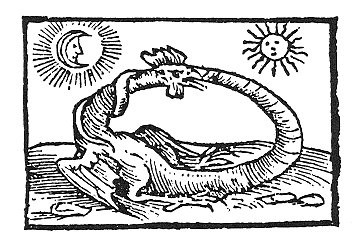
JUST as there existed, prior to and alongside of the canonical Gospels, many other settings of the Sayings The Gnostic Acts. and Doings of the Lord, so there existed, prior to and alongside of the selected or canonical Acts, many other narratives professing to record the doings and sayings of the Apostles and Disciples of the Lord. Most of these originated in what are now called heretical circles, but were subsequently worked over by orthodox editors to suit doctrinal prejudices, and eagerly embraced by the Catholic Church. As Lipsius, the greatest authority on the subject, says: "Almost every fresh editor of such narratives, using that freedom which all antiquity was wont to allow itself in dealing with literary monuments, would recast the materials which lay before him, excluding whatever might not suit his theological point of view--dogmatic statements, for example, speeches, prayers, etc., for which he would substitute other formulæ of
his own composition, and further expanding and abridging after his own pleasure, or as the immediate object which he had in view might dictate." (Art. "Apocryphal Acts of the Apostles," in Smith and Wace's Dictionary, incorporated into his exhaustive Die apokryphen Apostelgeschichte, 1883, etc.)
The main point of interest for us is that some of these edited and re-edited documents still preserve traces of their Gnostic origin; and Lipsius has shown that their Gnosticism is not to be ascribed to the third century Manichæism, as has been assumed by some, but to the general Gnosis of the second century.
Catholic Over-working.There was a very wide circulation of such religious romances in the second century, for these formed the main means of Gnostic public propaganda. The technical inner teachings of Gnosticism the Church Fathers, as we have seen, assailed with misrepresentation and overwhelmed with ridicule; to these onslaughts the Gnostics made no reply, most probably because they were bound by their oaths of secrecy on the one hand, and on the other knew well that the doctrines of the inner life could not be decided by vulgar debate. The inner teachings of their Gospel were for those within; to the rest they were foolishness. But the Acts-romances, often no doubt based on actual occurrences of the inner life, were not of so difficult a character. They may seem vastly fantastic to modern criticism, but to every shade of Christianity in those early years they were entirely credible. These formed the intermediate link between the General Church and the inner teachings of Gnosticism, and they could not be disposed of by ridicule.
[paragraph continues] Another method had to be used. As Lipsius says: "Catholic bishops and teachers knew not how better to stem this flood of Gnostic writings and their influence among the faithful, than by boldly adopting the most popular narrations from the heretical books, and, after carefully eliminating the poison of false doctrine, replacing them in this purified form in the hands of the people."
Fortunately the "purification" has not been complete, and some traces of the "poison" are still to be found, as we hope to show our readers in the sequel.
It would be out of place in these short sketches to attempt a description of these Acts, or enter into a Early Collectors. critical treatment of their sources; our only object is, to rescue from this mass of literature a few fragments which still preserve traces of old Gnostic teachings. The original works in which these teachings were first formulated, have disappeared; the tradition has been badly mutilated by many editors and scribes. Can it be that the new-found Coptic Acts of Peter may give us the translation of an original untampered-with text?
The earliest collection of these Gnostic Acts is said to have been made by a certain Leucius (there are no less than eighteen variants of the name), or Leucius Charinus, who is said to have been a disciple of John; but of course no reliance can be placed on this latter assertion, unless "John" is taken for the writer of the Fourth Gospel, and not one of the original Twelve. At any rate the so-called Leucian Acts were early; in the opinion of Zahn this collection was made at a time when the Gnostics were not yet
considered heretical, that is to say, prior to 150 A.D. However this may be, the Leucian Acts were a second century collection, for Clement of Alexandria was acquainted with them; they were also probably collected at Alexandria.
Another early collector of Gnostic Acts was a certain Linus, of whom nothing certain is known. He may probably have lived at Rome. The Abdias-collection is too late to be noticed in this connection.
For a full discussion of all these points, and an analysis of all the Gnostic fragments and references preserved in the Apocryphal Acts, I must refer the student to Lipsius' great work on the subject. We will now present the reader with the most important of these fragments, so that he may judge of their nature. Some of these Acts are untranslated in English; I use the most recent texts of Zahn, Bonnet and Lipsius.